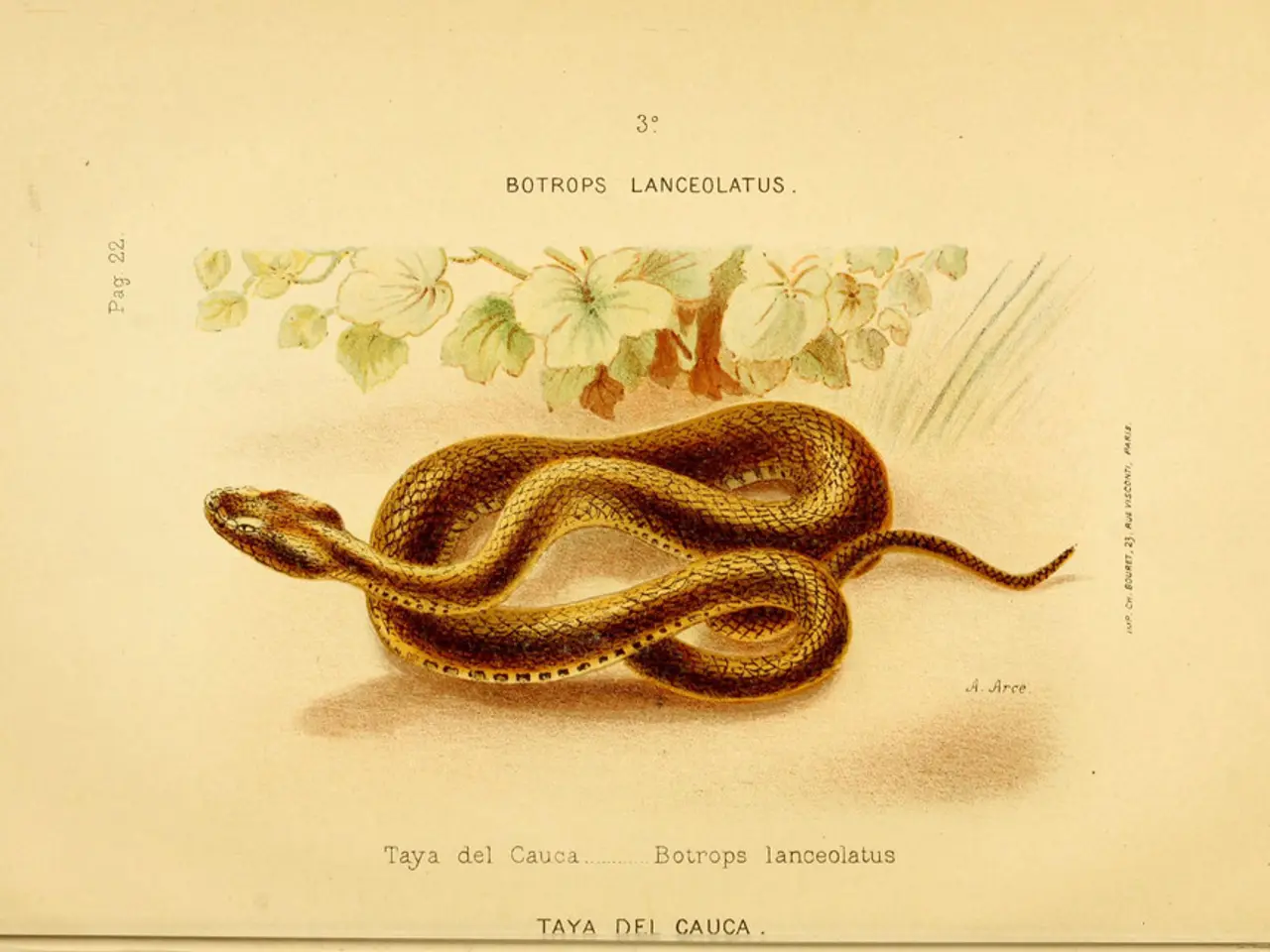Reinforcing rattlesnakes from extinction hinges on enhancing their image and clearing misconceptions surrounding them
In the heart of Texas, the small town of Sweetwater has been hosting the annual rattlesnake roundup since 1958. This event, attracting tens of thousands of visitors, raises funds for local charities but raises concerns among conservationists due to its impact on rattlesnake populations and their habitats.
During the roundup, up to thousands of rattlesnakes are captured, often killed, and sold or displayed. This large-scale capture and killing practice reduce local rattlesnake populations, disrupt ecological balance, and can harm habitat stability.
Ecologically, rattlesnakes serve as important predators controlling rodent populations. Their removal can lead to cascading negative effects on local ecosystems. Conservation groups and herpetologists have raised concerns that these roundups encourage unsustainable harvesting practices, threaten rattlesnake species' long-term viability, and lack sufficient measures to protect habitats or allow population recovery.
The Sweetwater roundup, being one of the largest and longest-running rattlesnake roundups, has historically contributed to significant declines in rattlesnake populations in the area and put pressure on their natural habitats. Efforts in recent years by some roundups and wildlife advocates include promoting rattlesnake education, venom extraction for medical use, and catch-and-release practices. However, the core activity of mass capture and killing remains controversial and is generally seen as detrimental to rattlesnake conservation.
Elsewhere, the relationship between humans and rattlesnakes remains complex. In Pennsylvania, conservationists are working to protect the remaining timber rattlesnakes, once abundant but now threatened or endangered in pockets throughout their broad U.S. range.
Meanwhile, in Arizona's Stone Canyon golf course, rattlesnakes have found a new home. Compared to snakes in more natural areas, the Stone Canyon snakes are growing larger, producing more offspring, and expanding their ranges among the McMansions. This conversion of pristine desert to housing developments has become a central research question for herpetologists, including research scientist Matt Goode, who has been capturing snakes, including western diamondback rattlesnakes, tiger rattlesnakes, and black-tailed rattlesnakes, for over 20 years.
Rattlesnakes, despite their fearsome reputation, have both fascinated and terrified people with their ability to remain hidden and their surprisingly strong bodies, needle-sharp fangs, and toxic venom. Recent research is focusing on venom-derived compounds that block or neutralize pain pathways, potentially offering an alternative to highly addictive opiates.
Rattlesnakes, more than 50 species, live across North America and remain within two to five miles of their birth location their whole lives. Young rattlesnakes follow their mother's chemical trail back to the family's den during the winter and overwinter coiled with kin of all ages, including other snake species. During hibernation, snakes have no interest in eating: If they can't bask, they can't digest.
As we navigate our complex relationship with these fascinating creatures, it's crucial to consider the impact of human activities on rattlesnake populations and their habitats. The Sweetwater rattlesnake roundup, while a historic event, poses significant conservation challenges that need to be addressed to ensure the survival of these iconic reptiles.
- In the world of environmental science and education-and-self-development, lessons about rattlesnakes and their crucial roles in our ecosystems are vital.
- The small town of Sweetwater's annual rattlesnake roundup, though popular for travel and lifestyle, raises concerns about the impact on endangered species and biodiversity.
- Rattlesnakes and their habitats face threats from unsustainable harvesting practices, as seen in the Sweetwater roundup, which disrupt conservation efforts.
- In the realm of medical-conditions and science, research focuses on using rattlesnake venom to create alternatives to highly addictive opiates.
- Conservation groups advocate for catch-and-release practices and venom extraction, rather than mass capture and killing of rattlesnakes, to preserve these species.
- While the ecosystem of the Sonoran Desert is home to various rattlesnake species, their populations in housing developments and golf courses, like Arizona's Stone Canyon, show signs of increased size and reproduction.
- Though they have a fearsome reputation, rattlesnakes possess fascinating adaptations, such as their ability to remain camouflaged and their strong bodies with needle-sharp fangs.
- During migration, young rattlesnakes follow a chemical trail back to their birthplace, hibernating with family members and other snake species during winter.
- As habitat destruction threatens rattlesnakes, it's essential to prioritize conserving their habitats for the sake of nature, wildlife, and overall biodiversity.
- In an urbanizing world, the study of rattlesnakes and their adaptations can provide valuable insights about the impact of human activities on wildlife and ecosystems.




